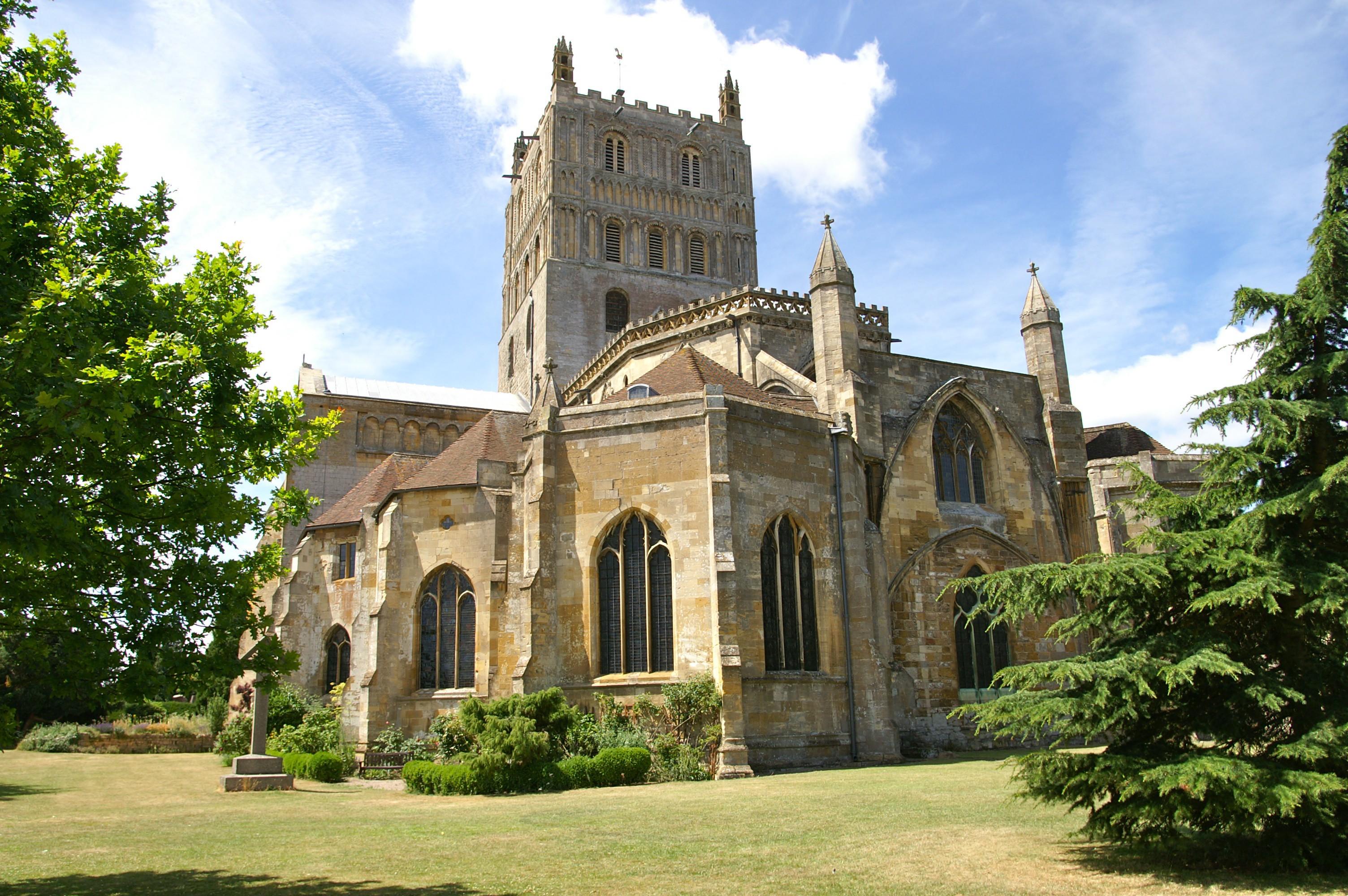St Mary
Deerhurst, Gloucestershire
St Mary's is one of the most complete buildings to survive from before the Norman Conquest.

With its enormous and imposing central tower, Tewkesbury Abbey is a Norman church built on a cathedral scale.
Tewkesbury, Gloucestershire
The sheer size of the building is further emphasised by the west end, which is entirely made up of a huge arch that rises to the full height of the nave. The look and feel of grandeur is continued inside, where giant pillars soar up to the roof.
The abbey was founded by Robert Fitzhamon, one of William the Conqueror's, most powerful barons, and was built between 1102 and 1121. Other Norman lords and their dynasties are connected with the abbey, and many of them are buried here.
The only major changes to the Norman structure were made in the 14th century, when the vaulted roofs were inserted, and when Lady Eleanor le Despenser, widow of one of England's most influential lords, transformed parts of the building to become, in part, a shrine to her husband and her family. So, in the chapels around the choir, are buried her husband (Hugh le Despenser), her ancestor, Robert Fitzhamon, and her son and his wife.
Many other hugely important participants in the wars, feuds and politics of the Middles Ages are buried here, including Edward, Prince of Wales, the only son of Henry VI. Glittering down on all this is some of the finest medieval stained glass in England, much of it dating from Eleanor's time.
Deerhurst, Gloucestershire
St Mary's is one of the most complete buildings to survive from before the Norman Conquest.
Deerhurst, Gloucestershire
One of the most complete surviving Saxon churches in England, this chapel was built in 1056 by Earl Odda, a relation of Edward the Confessor.
Queenhill, Worcestershire